GOODBYE TO MESTIA AND UPPER SVANETI
Despite a lovely evening with Keti and Vano, we woke up tired and irritable. Our nice but noisy medical student neighbours had kept us awake until well after 3.00 am and at 6.00 am we felt like we had had no sleep at all. Our room was icy cold and in an attempt to pull the short bed covers over me, I tugged too hard, my fist slipping and accidentally hitting me fairly and squarely in the mouth. The shower was cold and even after 15 minutes the water was only just luke warm. And once again, the wretched shower head fell off the wall, flooding the floor. My hairdryer overheated and I had to hang it out of the window to cool. Our iPad ran out of power, as did the camera.
I can't even record in this entry all that I had written in my notes - which included amongst everything else even unmentionable complaints about the poor roosters crowing, cows bellowing and dogs barking. Then to my frustration, my pen whilst writing my notes ran out of ink. From my rather colourful account of that morning, I must have been in a highly toxic frame of mind.
Despite my morning attack of The Blacks, we were in fact very sorry to be leaving Mestia. Our visit to the upper Svaneti had been truly fascinating and every bit as good as we had hoped for. The guest house staff bade us a fond farewell and obligingly posed for me to take their photos. It was a beautiful morning and the chalet shaped guest house looked particularly charming with its new stone wall and pretty flowering white apple blossom.
Our destination for the day was the township of Kutaisi in western Georgia. Our 230 kilometer trip would retrace our journey along the Mestia - Zugdidi road and past Enguri Dam, heading on to Zugdidi before veering south-east to Kutaisi where we would visit the Gelati Monastery Complex and nearby Bagrati Cathedral.
As we drove from Mestia, we passed through the tiny village of Matskhvarishi which houses several ancient churches. The history of the 13th century Archangels Church and its 17th century fresco art work was Keti's subject for her post doctoral studies, and a project about which she was intensely passionate. Keti came from a very well educated family, many of whom were professional people, mostly medical practitioners. From our discussions, Keti was obviously very close to her family, particularly her mother who was also a doctor in Tbilisi. "We try to forget all our troubles through our education. We just keep studying and studying..." she said with her generous smile. Keti also added than in Georgia, medical practitioners are not particularly well paid; the highest income earners being economists and lawyers. God save us....
My mood must have improved considerably as I was actually able to record with great enthusiasm the splendid morning and post card perfect scenery as we descended toward the Samegrelo region. We were especially fortunate to be travelling at this time of the year when just about everything was in flower, and without the flowers you would never guess from a speeding car what was actually growing. Pink Rhododendrons and white Lilacs flowered freely along the road, as did plum, apple, peach and hazelnut trees. Lush green meadows were filled with yellow and mauve daisies. Conifers clung impossibly to craggy peaks, framed by the still snow capped mountains. Waterfalls cascaded right down to our road. Keti informed that the intense growth and flowering season last for only a month or so, after which the vegetation burns off leaving a completely different yellow-brown appearance to the surrounds.
Cattle, donkeys, horses and dogs wandered happily across the tightly curved road, refusing to move on our approach. Like those laid back cattle we saw on our travels in India, it was clear who owned the place. It was just amazing there were no deaths on our journey. Keti told us there were many wolves in the area who found the donkeys particularly tasty...
As we descended, more of the gullies were cultivated, the soils looking rich and fertile. Interestingly, there were no crops planted as yet - a reminder of how late the growing season is in these higher grounds. Toward the village of Dizi, the road wound through steep sharp curves with frequent rock falls and landslides apparent, and road graders everywhere. I noticed Alan grinning at the name. I know that like me, he was reminded of our travels in Iran where our lovely guide Mohammad insisted that we try the local dish also called Dizi, a thick vegetable soup enriched with a large amount of pounded lamb fat. It brought back awful memories of me, with my hijab and long robes, having to desperately leap from Mohammad's car on a major Iranian desert highway with nowhere to hide, to attend to my violently protesting stomach. Ahh, the joys of travel in foreign lands...
As we passed the village of Khaishi, Keti frowned, recounting the issue of an Indian company wanting to establish a hydro-electricity facility on the Enguri River which would mean flooding particular valleys currently farmed by local Georgians. The real problem was that the local people would gain no benefit from the electricity generated by the power station which would be sold off by the company to foreign sources. Understandably the local farmers were outraged. At that time, the problem had not been resolved.
THROUGH SAMEGRELO TO KUTAISI - A CHANCE MEETING WITH A FRIENDLY FARMER
Heading south-east toward Zugdidi, we were again retracing our steps from our journey to Mestia two days previously. The rural countryside outside of Zugdidi was both attractive and interesting. Nearly all the farm dwellings were two-storeyed brick or rendered cement block buildings with characteristic steeply pitched roofs and lovely shady trellises draped with grape vines and kiwi fruit. We were intrigued with the farming as the house blocks looked to be only an acre or so in size, yet were jam packed with citrus and loquat trees and extensive vegetable gardens. Clearly, the house blocks although sizeable, could not support a family. It was quite intriguing as the whole of the area resembled what we in Australia would describe as "hobby farms" which are small acreages used mostly for pleasure rather than commercial interests. We assumed that the local farmers worked co-operatively on other farms or possessed more land at the rear of their properties - and Keti and Vano seemed to agree.
Vano obligingly stopped outside a particularly attractive, brightly painted blue and mauve farm house. I just had to get some photos for my blog. As I started to take photographs from outside the property the owner approached, obviously concerned at what I was up to. When Keti explained the man became extremely friendly and invited us into his property. The house and surrounds were immaculately kept and our kindly host was justifiably very proud of his house and garden. He explained the main two-storeyed house with its charming wooden verandah was where the extended family lived and the large building behind was the kitchen and dining area. The property also included a very cute wooden machinery shed and an above ground chicken coup. Chicken and geese pecked happily, and goats wandered freely around the grounds. It was all quite pleasantly bucolic.
KUTAISI - THE GELATI MONASTERY COMPLEX
We arrived in Kutaisi city in the early afternoon. The legislative capital of Georgia, the capital city of the Imereti Region and second largest city after Tbilisi, Kutaisi is located on the Rioni River some 220 kilometers west of Tbilisi in western Georgia. Kutaisi is one of the most ancient cities in the world and has played a key role in Georgian history. It was one of the main centres of the ancient Colchis and has had settlements in existence for almost 4,000 years.
Kutaisi may have had an interesting history but apart from the quite pleasant main square and central park, the little we saw of the city on our way to the Gelati Monastery Complex and Bagrati Cathedral, was quite depressing. Lonely Planet guide describes the city as "attractive and not without things to do" but we found the large Soviet style apartment blocks dominating the surrounds and the city's dull grey appearance totally uninspiring. And that was before we even took sight of our Bagrati Hotel...
King David IV must have loved Kutaisi however. Also known as David the Builder of the Bagrati Dynasty, he was the King of Georgia from 1089 until his death in 1125. Popularly considered to be the greatest and most successful Georgian ruler in history, he succeeded in driving the Seljuk Turks out of the country, winning the major Battle of Digdori in 1121. His reforms of the army and administration enabled him to reunite the country and bring most of the lands of the Caucasus under Georgia's control. A friend of the church and a notable promoter of Christian culture he was later canonised by the Georgian Orthodox Church. The liberal King David also gave close attention to the education of his people, selecting children who were sent to the Byzantine Empire "so that they be taught languages and bring home translations made by them there". Many of them later became well-known scholars.
King David is buried at his famous Gelati Monastery under a tombstone bearing the ancient yet moving Georgian inscription "This is my abode forever and ever, for I wish it. I have found eternal peace here...".
Gelati Monastery is located just 8 kilometers out of Kutaisi on the left bank of the Tskhatsitela River. The site complex was founded by King David the Builder in 1106, with the construction of the main church dedicated to the Nativity of the Virgin. Today, the site comprises three churches including also the 13th century Churches of St George and St Nicholas, as well as a significant bell tower building and remains of the Academy.
Gelati was remarkable for its day - as after all we are talking about the 12th century. For a very long time one of the main cultural and intellectual centres in Georgia, comprising an Academy which employed some of the most celebrated Georgian scientists, theologians, and philosophers, many of whom were the selected students who studied at leading orthodox monasteries abroad.
The monastery is important also for its architecture, mosaics and mural paintings, metalwork and enamel. The murals cover an amazing chronological range from 12th to the 17th centuries, functioning almost as a living museum of Georgian monumental paintings.
Today, Gelati is a UNESCO World Heritage Site which has been described by authorities as representing the highest levels of "the distinctive expression of the flowering of feudal monarchy in medieval Georgia".
The Church of the Virgin was under repair when we visited and its dome was unfortunately heavily covered with scaffolding. The dull and overcast day did not enhance its rather sombre exterior but inside the amazing ancient frescoes and artwork were fascinating.
The other two churches were not open to the public but we enjoyed our walk around the stately buildings. The Church of St George is an attractive tall domed structure with projecting apses, supported by massive stone columns. The Church of St Nicholas is a two-storeyed building with its ground floor open on all side through arches. The large Academy structure was particularly interesting with its enormous wide arched windows and richly decorated porch. In the late Middle Ages, when then Gelati Academy ceased functioning, the building was apparently turned into a refectory.
BAGRATI CATHEDRAL - WITH A TASTELESS BIT OF RENOVATION.....
Our next destination was to the 11th century Bagrati Cathedral located just over 9 kilometers from the Gelati Monastery Complex on the steep Ukimerioni Hill overlooking Kutaisi city. The first fortress was thought to have been built at this site in the 1st century AD, and even today the remains of the ruins of the 5th and 6th century as well as late medieval fortifications can be found here.
Bagrati Cathedral was built by King Bagrat III, the first king of united Georgia. Construction began at the end of the 10th century and completed in the early 11th century. Sadly, the cathedral was sacked by the Ottoman Turks in 1691, causing substantial damage with the entire dome collapsing. For centuries it remained roofless and unused. A similar fate awaited the apparently glorious palace-citadel immediately east of the cathedral when in 1769 it was recklessly bombarded from across the Rioni River from Mtsvane Hill by King Solomon of Imereti and a Russian General Todtleben, reducing both it and what was left of Bagrati to a sad ruin.
The rebuilding of the Bagrati Castle by Georgian restorers has been subject to intense criticism and controversy since renovations began in the 1950's. The initial restoration work was completed in 1994 when UNESCO experts acknowledged the Bagrati Cathedral along with Gelati as a World Heritage Site and one of the distinguished monuments of Medieval Age architecture. Continuing reconstruction work raised serious concerns about the authenticity of both monuments and led to the recommendation that Bagrati should be left as a ruin and added to the UNESCO Heritage Sites in Danger. The Georgian government however, decided to press ahead with the renovations. The totally rebuilt cathedral was opened officially on September 16, 2012 by President Mikheil Saakashvili.
At first observation, the Bagrati Cathedral looked like a grand and most imposing structure. Of course we are certainly no experts on Georgian history or architectural restoration, but we were quite shocked when looking a little closer, we found to our horror a hideous, glassed in rectangular stairway and lift well smacked right on the far left hand side of the building. The addition was truly absurd. In fact, we could hardly believe such a crazily tasteless attachment to such an iconic cathedral. When we raised the rebuilding with Keti, she just looked sad and shook her shoulders in despair.
Poor Bagrati. It certainly was off-putting and for us the restoration totally eclipsed our visit to the cathedral. The church from other angles (where you could not see the attached glass structure) was impressive however with its massive stately bearing and beautifully proportioned arches and striking turquoise dome. The structure is built as a "triconch" (a church building which has only three apses; normally omitting the one at the liturgical west end, which may be replaced with a narthex or enclosed passageway) with protruding sidearms which from an aerial view, form a cross. We were to see a number of churches in Georgia with this type of architectural design.
At the time of our visit the church was being used for several baptisms with numerous priests in attendance. The church was a hive of activity with friendly family members and heaps of children all dressed to the nines, looking happy and excited with the event. It certainly was an occasion treated with great celebration and utmost importance.
The interior of the church was disappointingly very plain and rather sombre in appearance. Perhaps it was the overall rebuilding, but it seemed somewhat featureless and lacking any real ambiance. It is indeed a vexed question as to whether ruins should be re-built or even old damaged structures renovated. We had seen mosques in Samarkand and other parts of Central Asia restored to nearly their former glory and despite ongoing criticism by historical bodies, we had been very impressed. For us, the jury is out as to what is right or wrong with restoration.
If we had thought the new Bagrati architecture was lacking in taste, it was nothing in comparison to our surprise at when we were dropped off at our Bagrati Hotel in Kutaisi. You could really only describe the imposing hotel as "Signature Brutal Soviet" construction. The entire building resembled an over sized office block with a similarly gargantuan interior to match. Our room was huge and depressingly furnished with ultra heavy wooden furniture, tizzy bedspreads, curtains and lampshades. There was even a tiny chatty looking chandelier.
Admittedly, the polished timber floors were lovely but coupled with the peeling dull mustard wallpaper and the dark timbered furniture, it all made for a very gloomy look. As mentioned in my hotel review, the staff however were extremely friendly and helpful, and we would have to say that our room was "spacious" and comfortable. And, after all for us Cat Tragics there were lots of healthy looking cats having a very social time in the lane way behind the hotel - which we could watch from our room.
Our meal as described in our review may have been a lot better if we had taken the advice of the helpful waitress and some friendly English speaking guests sitting at another table who assisted us with our translation - to avoid ordering the rice.... The two gin and tonics we ordered however were very generous and together with the friendly company, made up for a disappointing dinner.
Kutaisi: "This is My Abode Forever and Ever..."
Sunday, May 24, 2015
 Kutaisi, Georgia
Kutaisi, Georgia
Other Entries
-
5Russian History Time Line Summary
May 1014 days prior Moscow, Russian Federationphoto_camera9videocam 0comment 0
Moscow, Russian Federationphoto_camera9videocam 0comment 0 -
6A Walk with Svetlana - Absorbing Moscow City
May 1113 days prior Moscow, Russian Federationphoto_camera42videocam 0comment 0
Moscow, Russian Federationphoto_camera42videocam 0comment 0 -
7We Get Hopelessly Lost in Moscow...
May 1212 days prior Moscow, Russian Federationphoto_camera13videocam 0comment 0
Moscow, Russian Federationphoto_camera13videocam 0comment 0 -
8Aboard the Sapsan: From Moscow to St Petersburg
May 1311 days prior St. Petersburg, Russian Federationphoto_camera18videocam 0comment 0
St. Petersburg, Russian Federationphoto_camera18videocam 0comment 0 -
9A Walk With Nadya: Absorbing St Petersburg
May 1410 days prior St Petersburg, Russian Federationphoto_camera34videocam 0comment 1
St Petersburg, Russian Federationphoto_camera34videocam 0comment 1 -
10State Hermitage Museum & Adventures in St Petes
May 159 days prior St. Petersburg, Russian Federationphoto_camera22videocam 0comment 1
St. Petersburg, Russian Federationphoto_camera22videocam 0comment 1 -
11Once We Had No Armenian Visas - Now We Have Four..
May 168 days prior Yerevan, Armeniaphoto_camera5videocam 0comment 0
Yerevan, Armeniaphoto_camera5videocam 0comment 0 -
12The Caucausus - An Uncomfortable Dinner Party
May 177 days prior Yerevan, Armeniaphoto_camera4videocam 0comment 2
Yerevan, Armeniaphoto_camera4videocam 0comment 2 -
13The Caucasus - A Historic Timelime Summary
May 177 days prior Yerevan, Armeniaphoto_camera8videocam 0comment 0
Yerevan, Armeniaphoto_camera8videocam 0comment 0 -
14Armenia: Proud People of a Lost Land
May 177 days prior Yerevan, Armeniaphoto_camera25videocam 0comment 0
Yerevan, Armeniaphoto_camera25videocam 0comment 0 -
15Under the Gaze of Noah
May 186 days prior Yerevan, Armeniaphoto_camera36videocam 0comment 2
Yerevan, Armeniaphoto_camera36videocam 0comment 2 -
16Lake Sevan - The Tranquility and The Terror
May 195 days prior Gyumri, Armeniaphoto_camera36videocam 0comment 0
Gyumri, Armeniaphoto_camera36videocam 0comment 0 -
17Gyumri: God Will Heal Your Wounded Soil
May 204 days prior Bavra, Armeniaphoto_camera18videocam 0comment 0
Bavra, Armeniaphoto_camera18videocam 0comment 0 -
18Keti, Vano & Welcome to Georgian Hospitality....
May 204 days prior Akhaltsikhe, Georgiaphoto_camera19videocam 0comment 0
Akhaltsikhe, Georgiaphoto_camera19videocam 0comment 0 -
19To Borjomi - Playground of the Tsars
May 213 days prior Batumi, Georgiaphoto_camera25videocam 0comment 1
Batumi, Georgiaphoto_camera25videocam 0comment 1 -
20Batumi to Zugdidi - Mestia: Guests of the Dadianis
May 222 days prior Mestia, Georgiaphoto_camera27videocam 0comment 3
Mestia, Georgiaphoto_camera27videocam 0comment 3 -
21Silent Witnesses of a Strange Place
May 222 days prior Ushguli, Georgiaphoto_camera46videocam 0comment 0
Ushguli, Georgiaphoto_camera46videocam 0comment 0 -
22Kutaisi: "This is My Abode Forever and Ever..."
May 24 Kutaisi, Georgiaphoto_camera26videocam 0comment 0
Kutaisi, Georgiaphoto_camera26videocam 0comment 0 -
23To Gori: Birth Place of Joseph Stalin
May 251 day later Gori, Georgiaphoto_camera25videocam 0comment 0
Gori, Georgiaphoto_camera25videocam 0comment 0 -
24Gori to Tbilisi: Travelling Through Troubled Lands
May 251 day later Tblisi, Georgiaphoto_camera27videocam 0comment 0
Tblisi, Georgiaphoto_camera27videocam 0comment 0 -
25In the Presense of St Nino & Vano's Perfect Picnic
May 262 days later Tbilisi, Georgiaphoto_camera19videocam 0comment 0
Tbilisi, Georgiaphoto_camera19videocam 0comment 0 -
26In Fields of Gold: Davit Gareja Monastery Complex
May 273 days later Davit Gareja, Georgiaphoto_camera21videocam 0comment 0
Davit Gareja, Georgiaphoto_camera21videocam 0comment 0 -
27Bodbe Monastry: Resting Place of St Nino
May 284 days later Sighnaghi, Georgiaphoto_camera18videocam 0comment 0
Sighnaghi, Georgiaphoto_camera18videocam 0comment 0 -
28From Georgia Into Azerbaijan - "Good Luck"!
May 284 days later Sheki, Azerbaijanphoto_camera26videocam 0comment 0
Sheki, Azerbaijanphoto_camera26videocam 0comment 0 -
29Azerbaijan - A Very Well Kept Secret....
May 284 days later Sheki, Azerbaijanphoto_camera24videocam 0comment 4
Sheki, Azerbaijanphoto_camera24videocam 0comment 4 -
30Along the Dagestan Border to Ancient Lahij Village
May 295 days later Lahıj, Azerbaijanphoto_camera49videocam 0comment 0
Lahıj, Azerbaijanphoto_camera49videocam 0comment 0 -
31Baku - One of the Beautiful Cities of the World
May 306 days later Baku, Azerbaijanphoto_camera60videocam 0comment 0
Baku, Azerbaijanphoto_camera60videocam 0comment 0 -
32Flight Chaos OR a Saviour Called Mikhail
May 306 days later Baku, Azerbaijanphoto_camera7videocam 0comment 1
Baku, Azerbaijanphoto_camera7videocam 0comment 1 -
33Three Russian Miners AND The Bride of Frankenstein
May 317 days later Shanghai, Chinaphoto_camera6videocam 0comment 0
Shanghai, Chinaphoto_camera6videocam 0comment 0 -
34Shanghai OR How To Stuff a Dooner Into a Suit Case
May 317 days later Shanghai, Chinaphoto_camera5videocam 0comment 0
Shanghai, Chinaphoto_camera5videocam 0comment 0 -
35"Madam, This Queue is for Business Class Only...."
Jun 018 days later Shanghai, Chinaphoto_camera7videocam 0comment 0
Shanghai, Chinaphoto_camera7videocam 0comment 0 -
36Reflections & Those Who Made Our Trip So Speci
Jun 0310 days later Sydney, Australiaphoto_camera12videocam 0comment 0
Sydney, Australiaphoto_camera12videocam 0comment 0

 Kutaisi, Georgia
Kutaisi, Georgia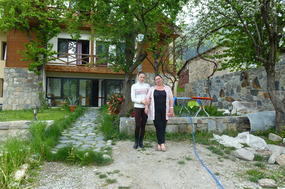
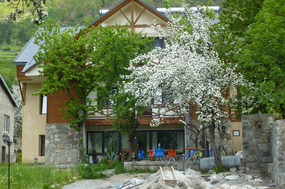
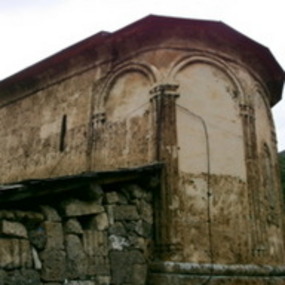
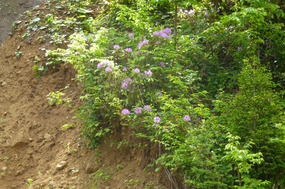
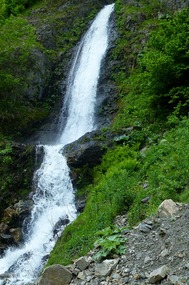
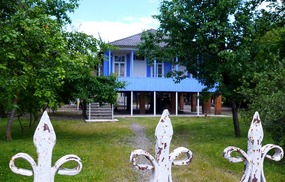
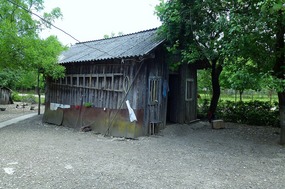
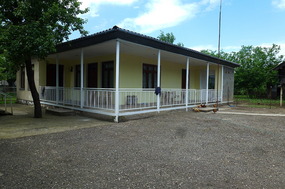
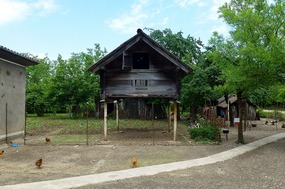
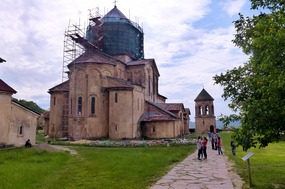
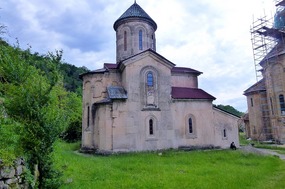
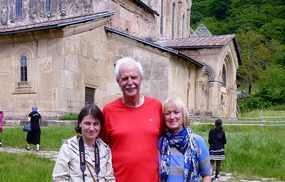
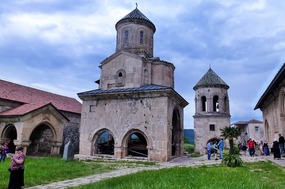

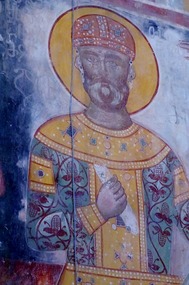
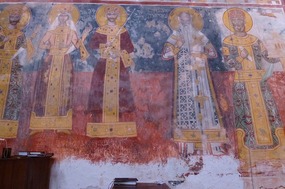

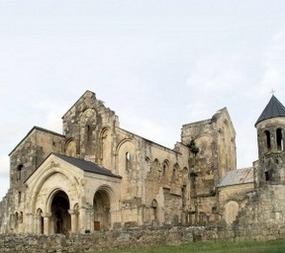
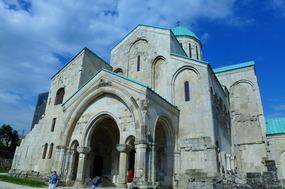
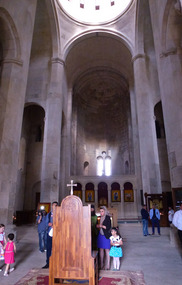
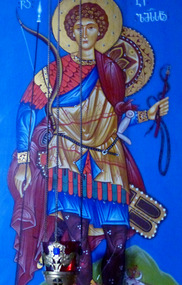
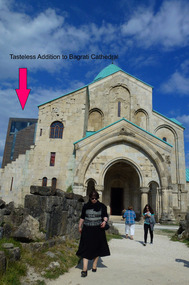
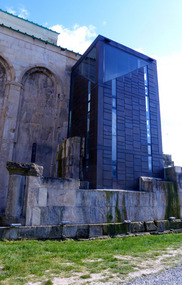
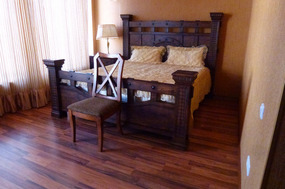
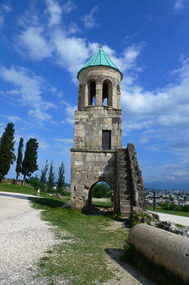
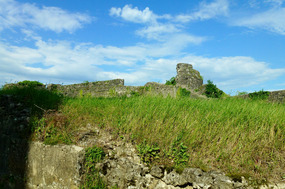






2025-05-22